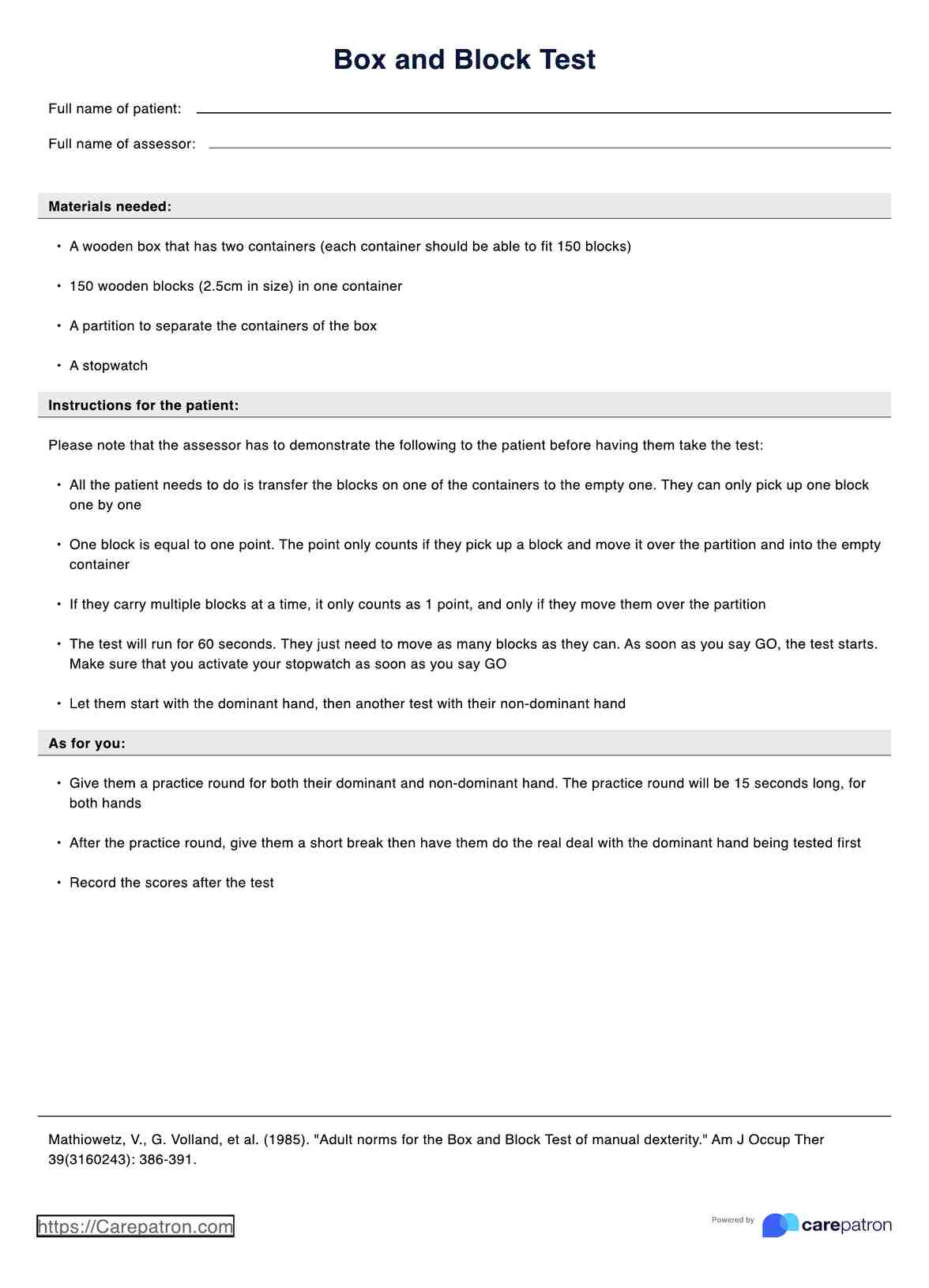You should finish between 1-5 minutes. Since this particular test sheet asks you to evaluate both hands and each test takes 60 seconds, you should roughly finish the whole thing in 3 minutes, including scoring.

Box and Block Test
Need to assess your patient's hand functions and finger dexterity? Then use the Box and Block Test to assess them! It’s one of the easiest tests to administer, not to mention one of the most inexpensive!
Box and Block Test Template
Commonly asked questions
Yes! You may definitely use this test, but of course, you are going to adjust it in a way that the test supports the use of the prosthetic arm or whatever aid they have. Your care plan also has to take that into account.
It depends. It is totally enough so long as the only motor functions that have impairments are the arms, hands, and fingers. If your patient has other issues, then this test is not enough and should be conducted on the same day as other tests that may help (that is up for you to decide), like the Nine-Hole Peg Test, Timed Up and Go Test, etc. This is so you have a more informed expert’s opinion and a well-round view of your patient.
EHR and practice management software
Get started for free
*No credit card required
Free
$0/usd
Unlimited clients
Telehealth
1GB of storage
Client portal text
Automated billing and online payments











